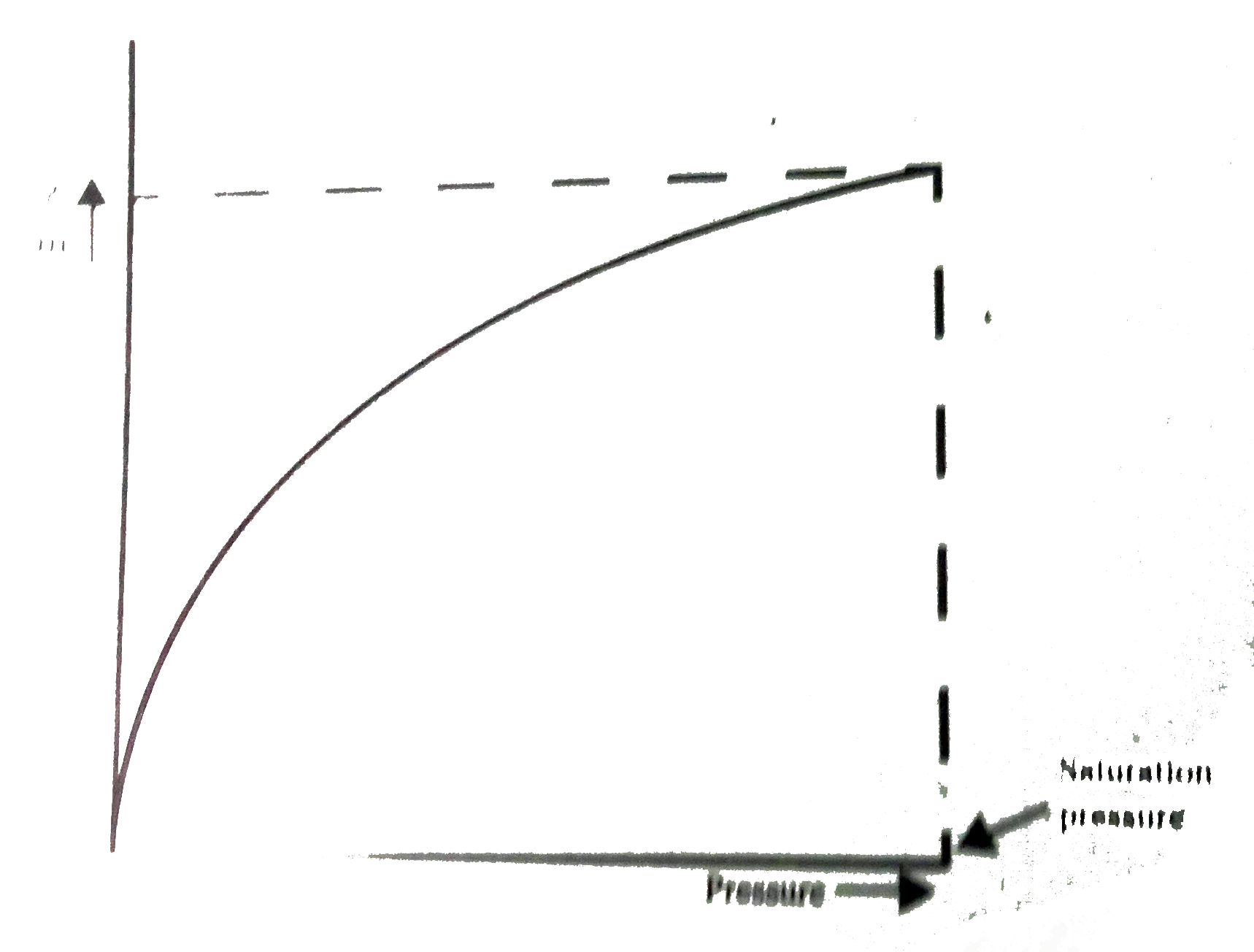What is adsorption? How does adsorption of a gas on a solid surface vary with pressure? Illustrate with the help of an appropriate graph.
Text Solution
Adsorption is the phenomenon of attracting and retaining the molecules of a substance on the surface of a liquid or a solid, resulting in higher concentration of the molecules on the surface.
Effect of pressure: At constant temperature, the adsorption of gas increases with increase of pressure of the gas. At low pressure, it increases rapidly. At an equilibrium pressure, the extent of adsorption (x/m) reaches its maximum value after which adsorption is independent of pressure.
xm=kP1/n

|
Topper's Solved these Questions
- SURFACE CHEMISTRYBOOK - FULL MARKSCHAPTER - SURFACE CHEMISTRYEXERCISE - ADDITIONAL QUESTIONS (5 Marks questions)
12 Videos
- SURFACE CHEMISTRYBOOK - FULL MARKSCHAPTER - SURFACE CHEMISTRYEXERCISE - ADDITIONAL QUESTIONS (2 Marks questions)
50 Videos
- SOLID STATEBOOK - FULL MARKSCHAPTER - SOLID STATEEXERCISE - Additional Questions 5 Mark Questions
5 Videos
- TRANSITION AND INNER TRANSITION ELEMENTSBOOK - FULL MARKSCHAPTER - TRANSITION AND INNER TRANSITION ELEMENTSEXERCISE - Additional Questions (X. 5 Mark Questions.)
4 Videos
Similar Questions
Knowledge Check
What is tue for adsorption of gas on solid surface
AΔH>0,ΔS>0BΔH>0,ΔS<0CΔH<0,ΔS>0DΔH<0,ΔS<0In Langumir's model of adosrption of a gas on a solid surface :
Athe mass of gas striking a given area of surface is proportional to the pressure of the gas.Bthe mass of gas striking a given area of surface is independent of the pressure of the gasCthe rate of dissociation of adsorbed molecules from the surface does not depend on the surface coveredDthe adsorption at a single site on the surface may involve multiple molecules at the same timeIn langmuir's model of adsorption of a gas on a solid surface
Athe mass of gas striking a given area of surface is proportional to the presence of the gasBthe gas striking a given area of surface is independent of the pressure of the gasCthe rate of dissociation of adsorbed molecules from the surface does not depend on the surface corvedDthe adsorption at a single site on the surface may involve multiple molecules at the same time
Explain the terms: Physisorption and Chemisorption.
How does adsorption of a gas on a solid surface vary with pressure?
View SolutionIn Langmuir's model of adsorption of a gas on a solid surface,
View SolutionIn Langur's mofel of adsorption of a gas on the solid surface :
View SolutionIn Langmuir's model of adsorption of a gas on solid surface
View SolutionThe adsorption of gas on a solid surface varies with pressure of the gas in which of the following manner.
View Solution
